Walkabout with Montrose: All Things Luxurious
There’s nothing like a Gilded Age apartment to set the heart racing — or to inspire a swap for one’s first born, as the movie Rosemary’s Baby so famously depicted. That particularly coveted real estate showstopper was located in Manhattan’s Dakota building, home to stars from John Lennon to Lauren Bacall. But Brooklyn has its…
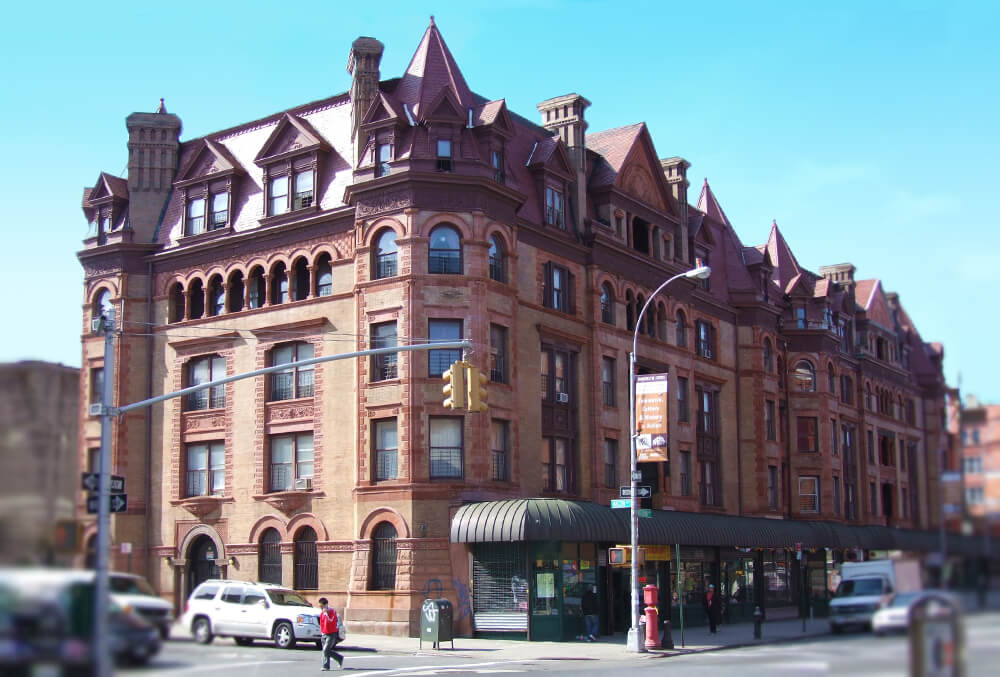

There’s nothing like a Gilded Age apartment to set the heart racing — or to inspire a swap for one’s first born, as the movie Rosemary’s Baby so famously depicted. That particularly coveted real estate showstopper was located in Manhattan’s Dakota building, home to stars from John Lennon to Lauren Bacall.
But Brooklyn has its grand apartment buildings too. These immense elaborate structures attracted admiration like no others — and they still do today.
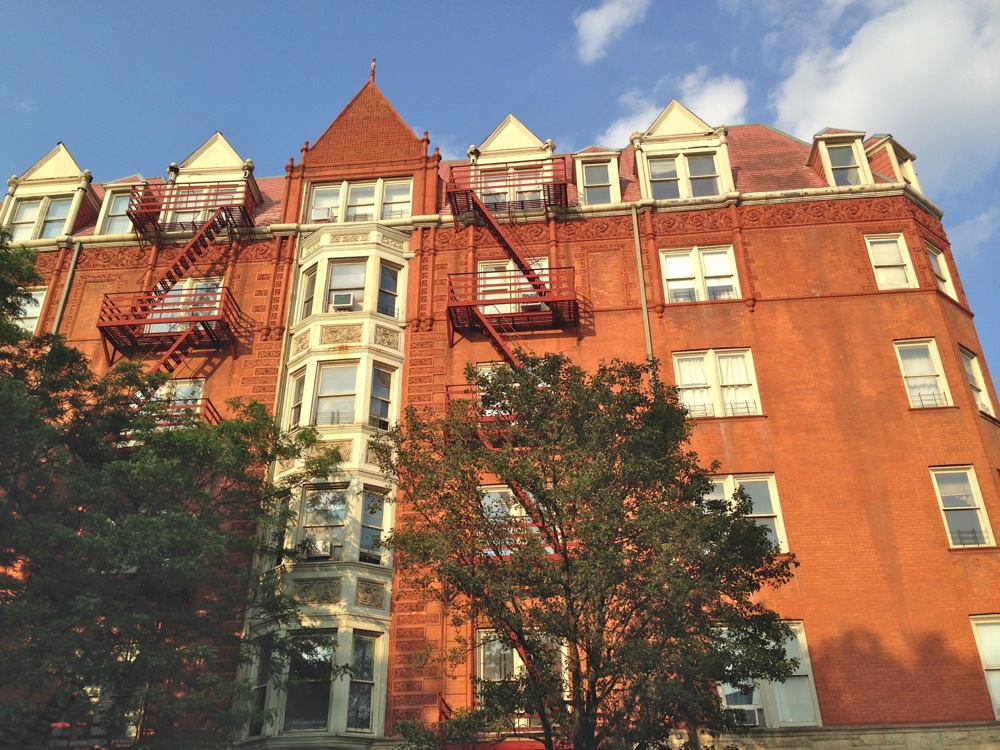
Clinton Hill’s Vendome.
In affluent Clinton Hill, the first apartment building — the Vendome — was built in 1887, designed by Halstead and Fowler.
The Romanesque Revival castle on the corner of Gates and Grand originally had 17 luxe apartments, each with seven rooms and a bathroom. Ads in the Brooklyn Eagle in 1888 boasted of the building’s elevator, private billiard room, smoking room, steam heat, boot black, telephones, telegraph and messenger service, and an available caterer.
Today, the building has 24 units, and an ongoing conflict between longtime renters and the building’s owner.
The Clinton.
The Clinton, built in 1897, on Clinton Avenue, near Dekalb Avenue, is an even finer apartment building. Its E configuration maximizes light and air in all of the apartments. When it was built, it had only 30 spacious apartments, two on each floor in each wing.
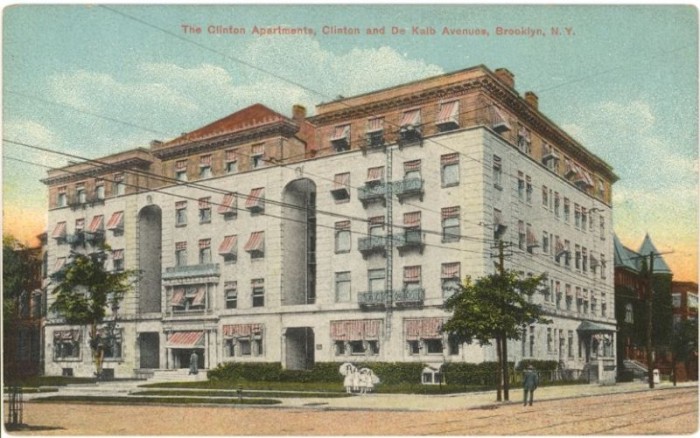
Each apartment was huge, with seven to eight rooms, all luxuriously decked out with the finest woodwork, floors and finishings. The apartments had the latest in plumbing and appliances, electric lights, telephones, steam heat, elevators, and all of the new modern conveniences.
There were even “hall boys” who ran errands. One could live here, have the usual number of servants and enjoy living on the premiere block of posh Clinton Hill.
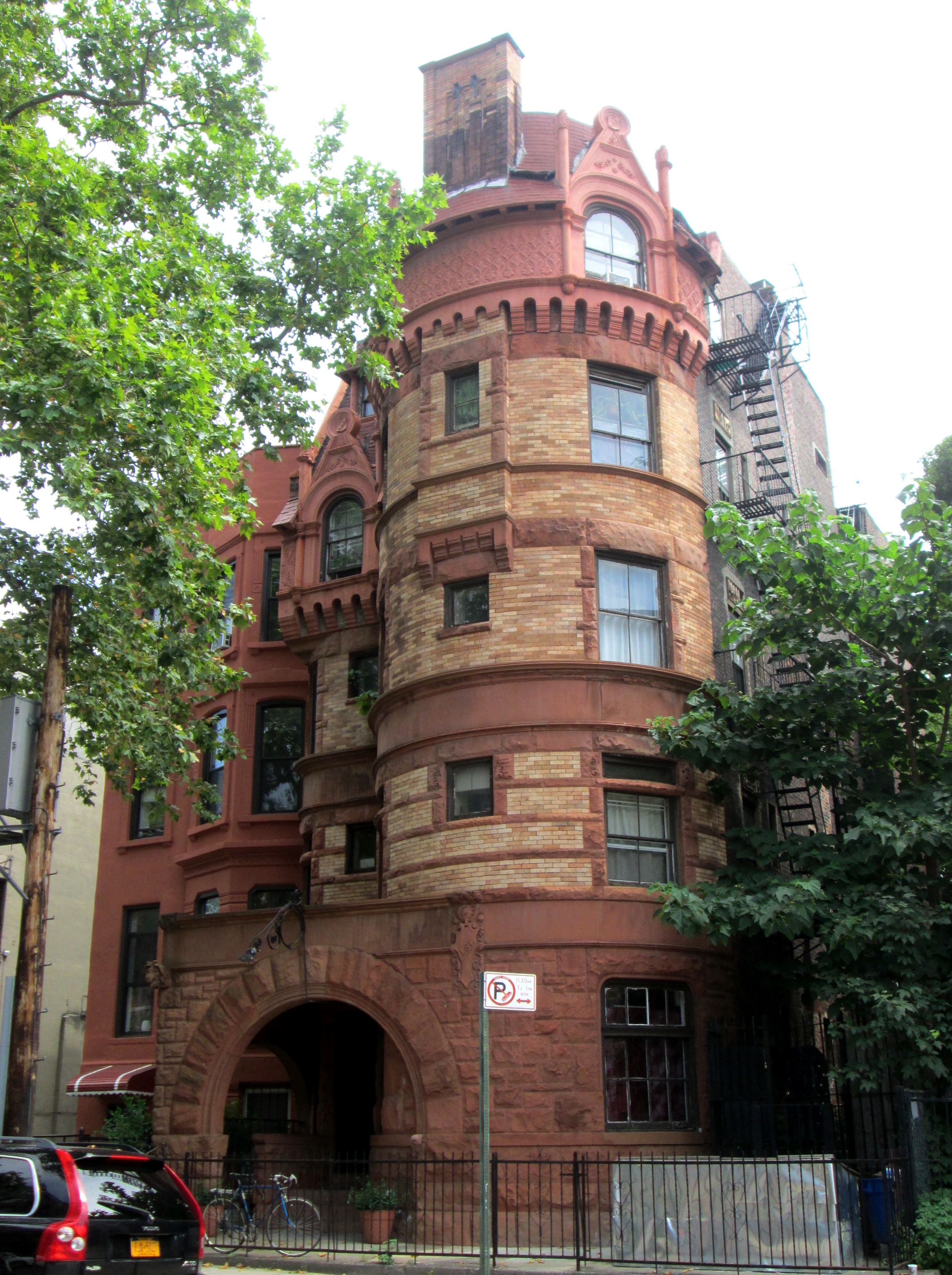
A castle at 487 Clinton Avenue.
Nearby, Langston and Dahlander’s Loire Valley Chateau-like building at 487 Clinton, near Fulton Street (1892), is considered by many to be the finest multiple-unit dwelling in the Clinton Hill Historic District.
The main entrance and hallway to the building took up the left side wing on the ground floor, and led to the elevators and stairs in the back. That left room for 29 remaining apartments. The apartments included a parlor, dining room, kitchen, servant’s room, three bedrooms and a full bathroom along their length. The parlor and dining room, at the front, were full apartment width, with a long hallway opening up to the servant’s areas, the bedrooms and bathroom.
The finishings were in the Colonial mode, with both gas and electric lighting, gas ranges, the finest in new plumbing fixtures and tile, as well as fine woodwork, floors and fireplaces.
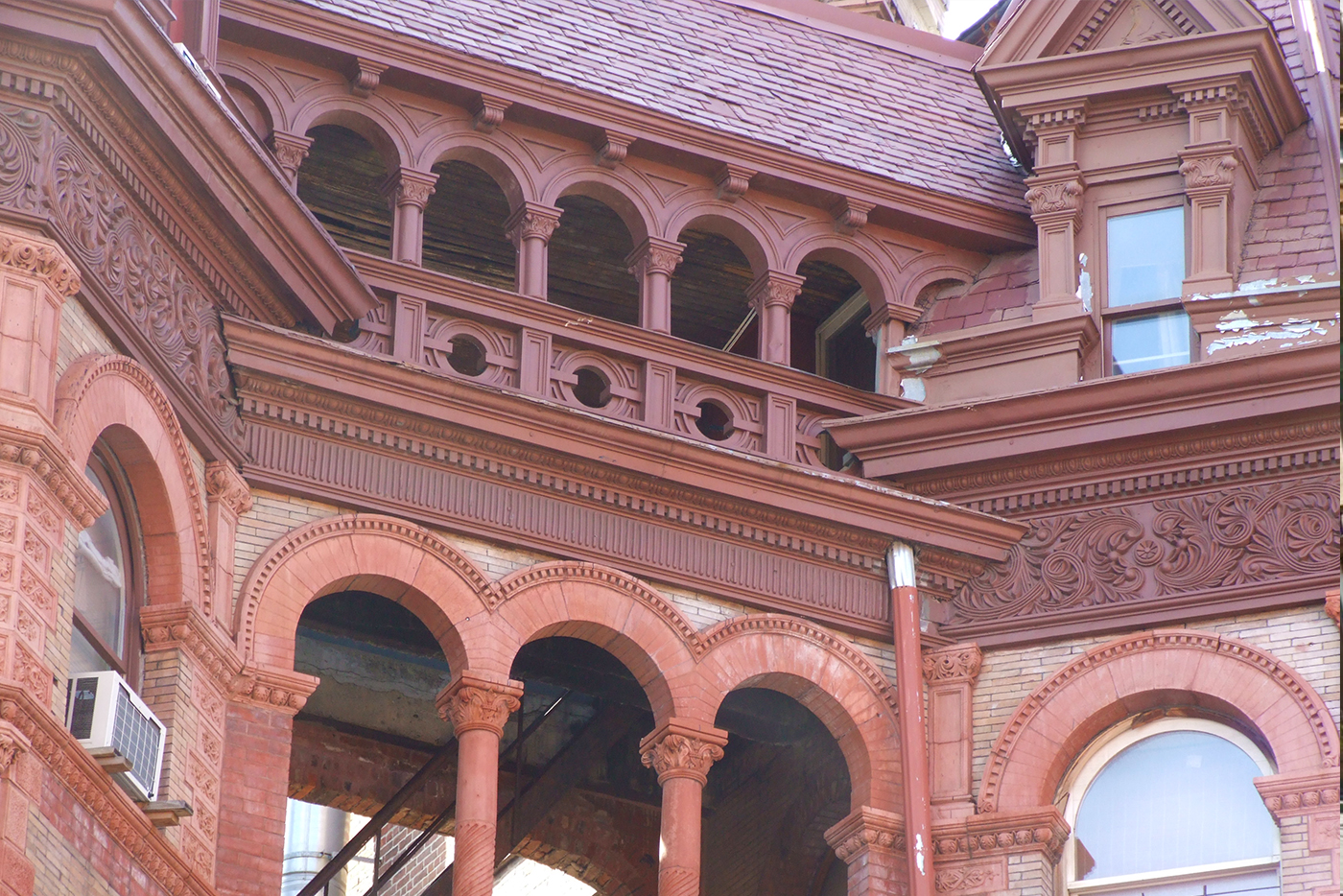
Bed Stuy’s Alhambra.
Over in the prosperous communities of Bedford and St. Marks, an enterprising developer, Louis F. Seitz, commissioned a talented local architect named Montrose Morris to design three apartment buildings suitable for the upper classes.
The first, the Alhambra on Nostrand Avenue — pictured at top — was built in 1889 across the street from the new Girls High School. It is a block-long red brick and terra cotta Romanesque Revival masterpiece, with open loggias and balconies breaking up the strong lines of the Nostrand Avenue facade, the entire building ornamented with terra cotta bands and friezes.
Originally, the building had 30 apartments, six on each of the five floors, all with eight or nine rooms. Each apartment had a reception room, library, dining room, kitchen, bathroom and three or four bedrooms.
Each apartment was arranged with wide sliding doors, to enable all of the public rooms to be opened up into one large room for receptions.
The building provided a storeroom for each apartment, laundry and drying rooms were available, the building was lit by electricity, and a janitor, engineer and hall boys were on staff. Louis Seitz himself had an apartment here.
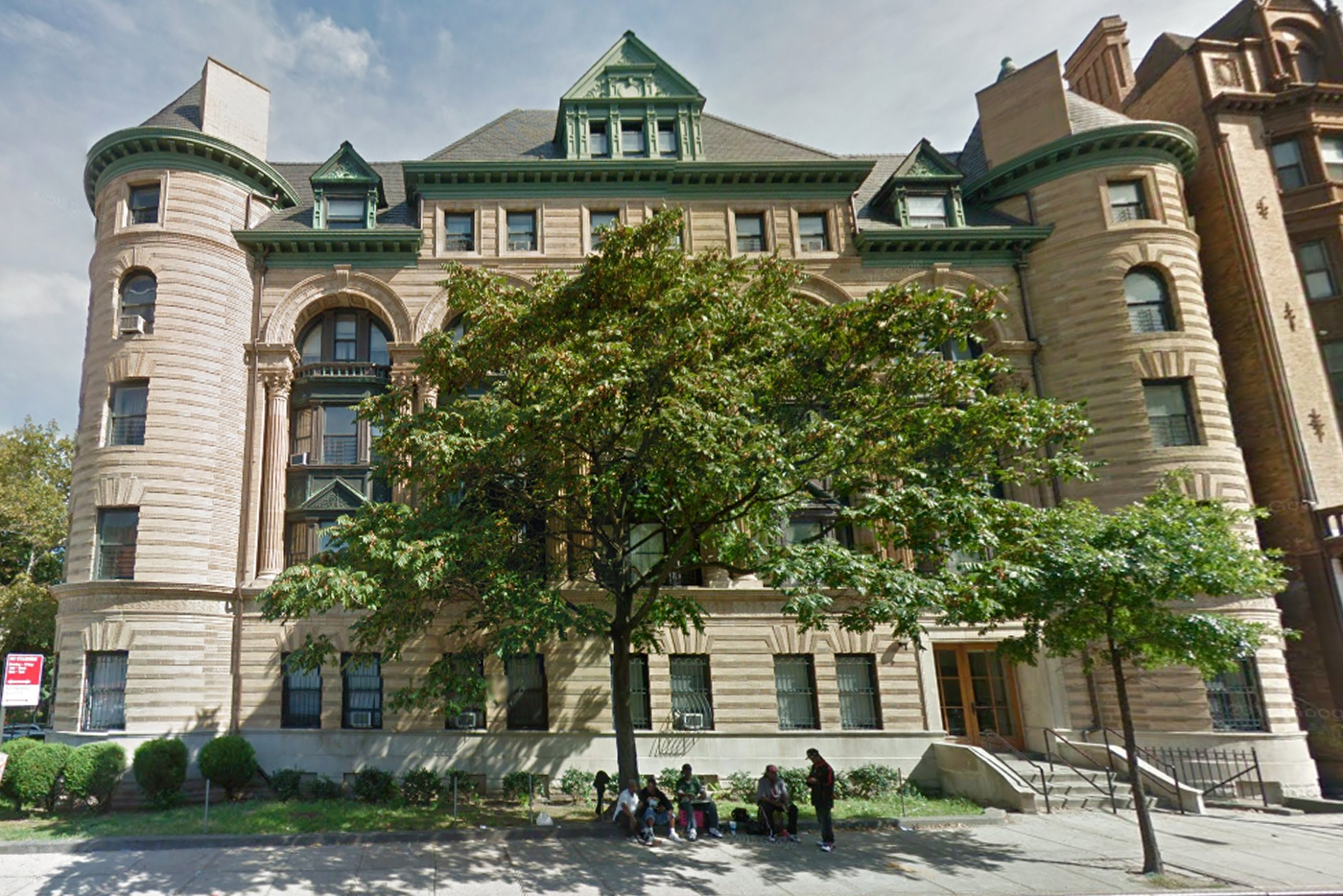
Crown Heights’ Imperial Apartments.
With the great success of the Alhambra, Morris went on to design the Imperial Apartments in nearby Grant Square. Said to have been inspired by McKim, Mead and White’s Hotel Imperial, this French Renaissance Revival Castle, built in 1892, was described by the Brooklyn Eagle as an architectural dream in cream and white.
It boasts monumental Palladian arches, two story fluted columns and is ornamented by alternating row of brick and terra cotta trim, under a mansard roof.
Inside, the 25 apartments of seven-plus rooms were set up similarly to those in the Alhambra, with pocket doors opening up the spaces into one large room, all furnished in the finest oak, mahogany, and other woods, with all of the best of modern conveniences.
The Eagle went on to say that the Imperial was one of the finest apartment buildings in Brooklyn, and was equal to Manhattan’s Dakota.
At the turn of the century, the census showed among the occupants an importer, as well as several lawyers and stockbrokers.
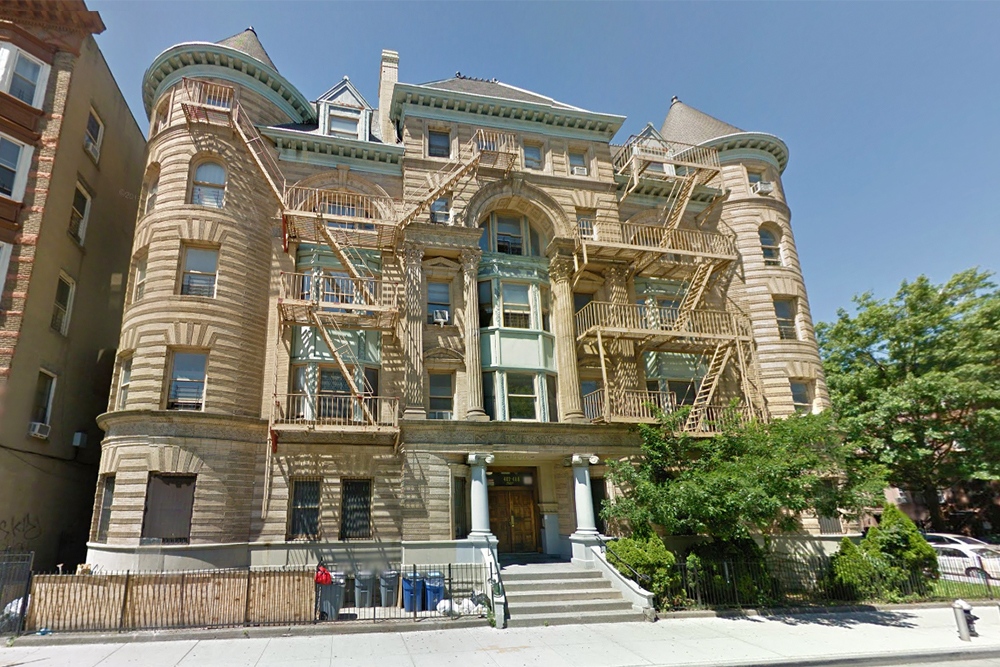
The Renaissance.
The third Seitz/Morris collaboration, the 1892 Renaissance, also on Nostrand Avenue in Bedford Stuyvesant, is a smaller, scaled-down version of the Imperial, with a more Loire Valley chateau look. It was equally appointed as the other two.
Brooklyn Heights, Park Slope and other neighborhoods also had upper-middle-class luxury apartments during this time, of course.
Montrose Morris was also active in both neighborhoods, with the Arlington on Montague and an Italian Renaissance building of grey brick and terra cotta on the corner of 8th Avenue and Carroll Street, built in 1894. The stigma against apartment living more or less disappeared by the time the elegant prewars were built in the first third of the 20th century.

The large mansions began to disappear on the streets of Park Slope, Clinton Hill, Brooklyn Heights and St. Marks, replaced by large apartment buildings, many offering the best of luxury living without the upkeep of a house. Prospect Park West, 8th Avenue, Pierrepont, Remson, Eastern Parkway, Clinton and Washington all became known for their elegant co-ops and apartment buildings, and many of the remaining great mansions became headquarters for private clubs and organizations, schools, churches, or were divided into apartments, or worse, became houses of ill repute.
Visit this Flickr gallery to see more detailed photos of these buildings.

This story has been edited and updated since its initial publication.
Related Stories
Suzanne Spellen, aka Montrose Morris, Is Writing Brownstoner’s First Book
How the Jehovah’s Witnesses Acquired Some of Brooklyn’s Most Insanely Valuable Properties
1880s House Envy: Reporter Visits “The Most Magnificent Private Residence in Brooklyn”
Email tips@brownstoner.com with further comments, questions or tips. Follow Brownstoner on Twitter and Instagram, and like us on Facebook.
[sc:mailchimp-books ]
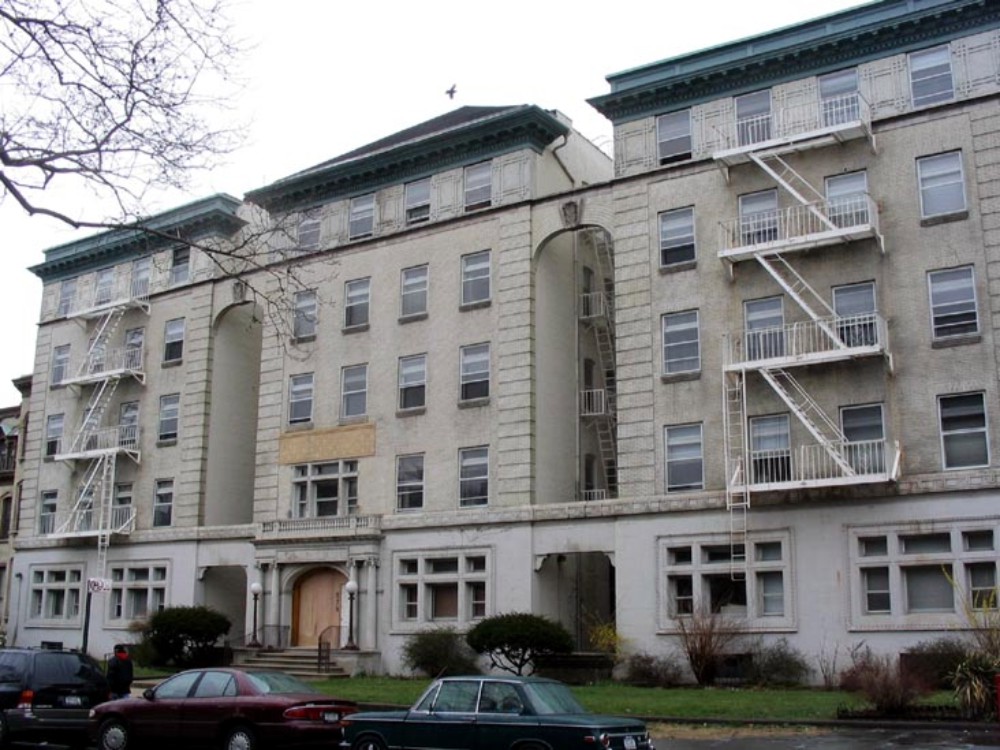








Montrose:
It’s probably too late New York time for you to read this, but thanks for re-introducing me to two of my favorite Brooklyn apartment houses, The Imperial and The Alhambra, which figured in my 1950’s Crown Heights boyhood. The first was a fun house for kids. The second was where I was introduced to the world of adults (or, more specifically, the world of adult males, as represented by my father and his friends).
My pal “L†lived at the Imperial. From the street, the building was so big that my small brain couldn’t take it all in. And inside, there more twists and turns than could be counted: gloomy stair halls, creaking steps, long passages — spooky for a kid.
L’s apartment seemed to extend forever. There were the “children’s†parts of the apartment – the hall leading to his room, his room, the kitchen, various nooks and crannies – and the “parent’s†parts, which were off limits. There were fire places, which were never lit. And monumental doors. No amount of modernizing touches could lighten up the place. This was deep in the heart of Victorian Brooklyn.
You must understand. Brooklyn in the 1950s was as close to the 19th Century as it was to the Twenty-First. And Crown Heights, mid-century, was transitional, parts of it still “proper†where people spoke in antique accents (inserting “R’s†in every vowel, as in “water†pronounced “warterâ€) and rustling among the tea cups, other parts rocking to R+B.
And The Imperial fit right in.
L’s parents were “cool†bohemian types (like my parents, or today’s hipsters) but had the wood-fretted Suburban waiting at the curb to haul us out to their house in the Hamptons, back when they were real “summer colonies†and not plutocrats’ redoubts. Casual, but correct!
Poor “L†was ahead of the curve. The little guy had braces before any of the rest of us and would lather at the mouth like a mad pup (all those rubber bands). “The Foamer,†Dad called him. But he was sweet and funny, and his parents always welcomed his friends. That is, as long as we stayed clear of the adults’ part of the joint, which was cordoned by velvet ropes (I kid you not!).
Meanwhile at the Alhambra lived a good friend of my parents, “R.†An elderly artist, whom I remember as club-footed, greeted his visitors with great formality and led them slowly to his parlor at the end of the hall. His paintings lined the walls and his furniture mixed Mexican and Indian influences (cheap, back then).
One of my basic childhood memories is from R’s living room. In this dark, high-ceilinged room, he and Dad spoke about politics and art while I ate date bread with raspberry jam. The light from the arched windows gave them a spectral appearance, emphasizing their voices, which were deep and – because of the topics – mysterious. But I was so happy to be included in their company (even if, as I now realize, I was parked to the side with my snack). Very different, I knew, from my mother’s “visits†where children were often the focus of attention. With Dad, I was expected to occupy my time, just like a little man. Or what a man was presumed to be at the time.
By the 1950s, buildings like The Imperial and The Alhambra were coming to the end of their first lives. Who would live in them except the bohemian, elderly and/or poor? Everyone else was moving to the suburbs. But for those who remained behind, they were proud places. Which makes my heart sink when I think of the abuses they suffered by the 1960s.
Now, they’re wonderfully restored – at least from the street. Sure they’re chopped up and probably indistinguishable on the inside from any other affordable housing. But how their brick glints in the sun! And how their turrets pierce the sky!
For this Brooklyn kid, peerless.
Nostalgic on Park Avenue
Wonderful, wonderful thread, MM. Thanks, as usual!
Truly great, MM. I adore these!
Here’s the Bedfordshire listing: http://www.prudentialelliman.com/Listings.aspx?ListingID=1145285&rentalperiod=&SearchType=apartments&Region=NYC
Another example how yesterday’s Luxury is todays – affordable….
Minard, all of the Montrose Morris buildings in Bed Stuy and Crown Hts have been gutted and repurposed as affordable housing. What was a 9 room apartment is at least 2, maybe three, now. I would be interested in seeing what they did. Sometime I’ll go down to DOB and pull up the plans. If I’m lucky, the originals may be there too.
The Bedfordshire, next door to the Imperial, which is in the Flickr pix, just got rehabbed into condos. They have some exposed brick fireplace openings, but no other detail. I have to run out to a meeting, but will look for the listing and post in a couple of hours.
Bkre, I’ll talk to Mr B about that, expecially on articles like this with only a few buildings.
As I recall the interiors are all contemporary. Both buildings were gutted by fire and then stood roofless for years. The Vendome was restored around 1989 and the Alhambra a year or two later. Montrosse? Do you recall?
Amazing that these grande dames were sunk nearly to ruins (good comment, Minard). Now of course my burning Q is: What do the apartments look like inside? Is there any trace of the original detail, or were they gutted? And what is it like to live with that medieval-looking balcony with its coffered ceiling–who has that apt. and do they ever stroll amongst their columns in the sky?
I also love the massive Tudor-inspired apt. bldgs. along Ocean Avenue between Church Avenue and Ditmas…many have massive interior courtyards…many are still battered sad versions of their former selves with graffiti and steel entry doors and broken fencing, but some seem to have stayed in good shape or been renovated. They were home to early silent-film stars and other A-listers back in the day; I’ve always longed to see the apartment interiors to look for traces of their former grandeur.
MM – I do find these posts very interesting. I think one thing that would make them better would be to include a map showing all the locations of the specific buildings you mention in these posts. I find myself flipping back and forth between your post and google maps all the time. Also it would make it easier for when I eventually try to plan my own private walking tour to check our the buildings you highlight. Thanks.